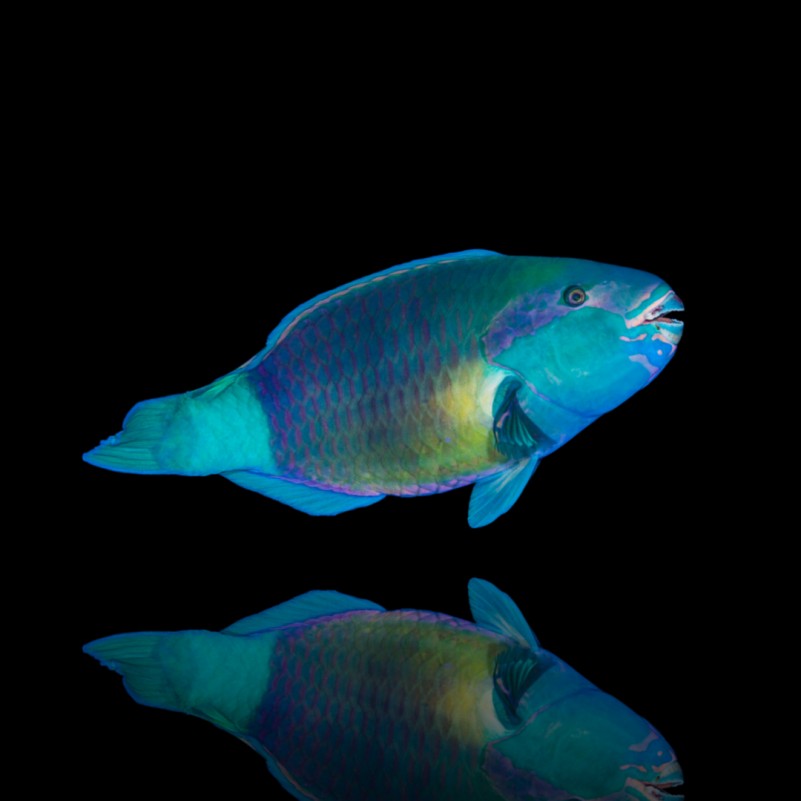Scarus sordidus, commonly known as the knobbed parrotfish, Daisy parrotfish or dusky parrotfish, is a species of parrotfish belonging to the family Scaridae. Here are some detailed aspects of this fish:
Physical Description
- Appearance: Scarus sordidus exhibits significant sexual and age-related dimorphism. Juveniles and females are typically brown or gray with lighter stripes or spots, while adult males are often more brightly colored with shades of blue, green, and yellow. They have sturdy, beak-like teeth that help them scrape algae from coral and rocks.
- Size: This fish can reach a length of about 40 cm, although most individuals are smaller.
Habitat
- Distribution: The dusky parrotfish is widely distributed in the Indo-Pacific region, including the Red Sea, the Indian Ocean, and parts of the Pacific Ocean.
- Environment: They are usually found on coral reefs, both in lagoons and on the outer edges of reefs, at depths ranging from 1 to 30 meters.
Behavior and Ecology
- Feeding: Scarus sordidus primarily feeds on algae, which they scrape off coral and rocks with their beak-like teeth. This feeding helps prevent excessive algal growth on coral reefs, which is essential for the health of the coral.
- Reproduction: This species is hermaphroditic, typically starting life as females and later changing to males. Reproduction occurs through external fertilization, with eggs and sperm released into the water.
Conservation
- Threats: The main threats to Scarus sordidus include habitat loss due to coral bleaching and reef destruction, overfishing, and pollution. Since they depend on coral reefs for food and shelter, they are vulnerable to changes in these ecosystems.
- Protection: Conservation measures for coral reefs, such as establishing marine protected areas and promoting sustainable fishing practices, help protect the populations of the dusky parrotfish.
Interesting Facts
- Color Change: The dramatic color change between juveniles, females, and males is a fascinating example of sexual dimorphism and ontogenetic coloration.
- Role in the Ecosystem: As grazers, dusky parrotfish play a crucial role in maintaining the balance of the reef ecosystem by controlling algal growth, which in turn supports the health and biodiversity of coral reefs.
Scarus sordidus is an important species in coral reef communities, contributing to the ecological balance and health of these vulnerable marine ecosystems.



